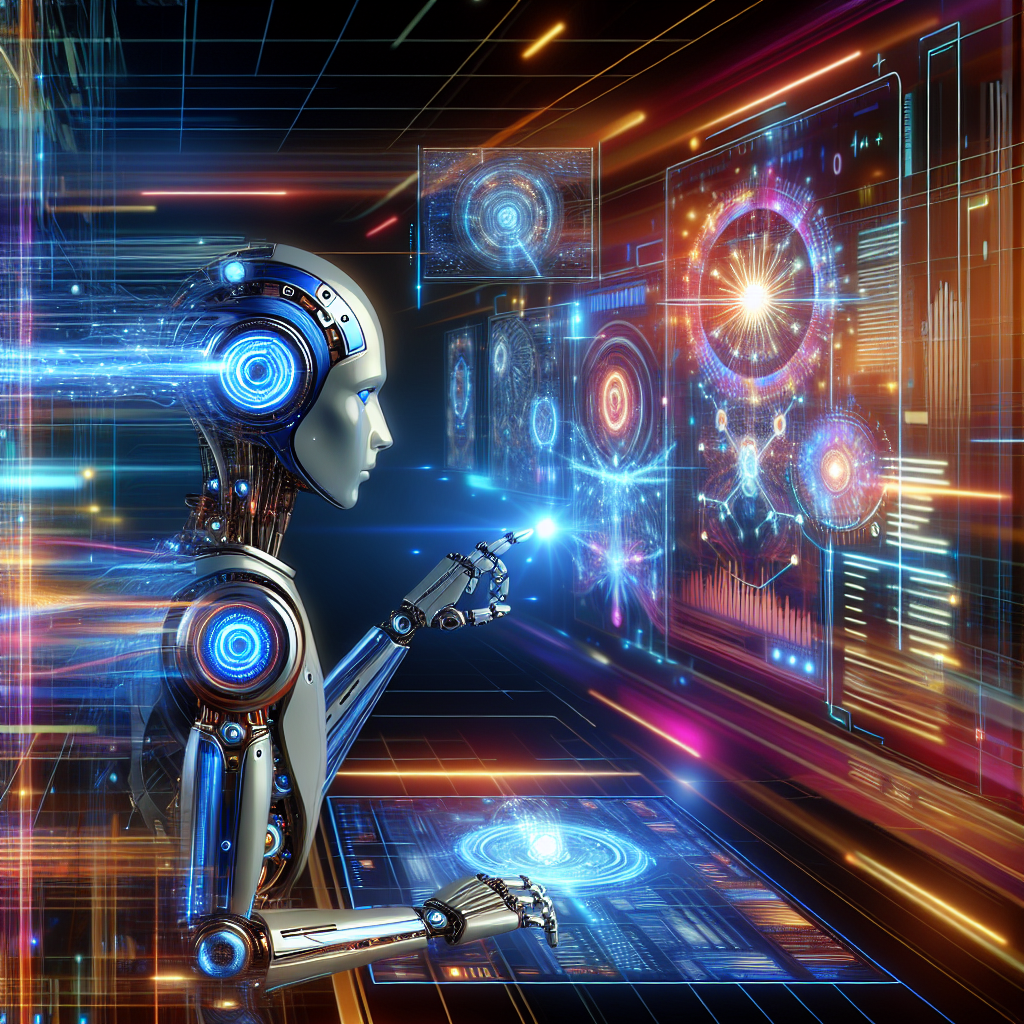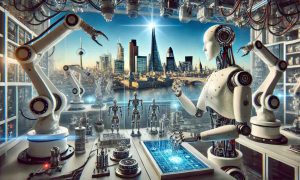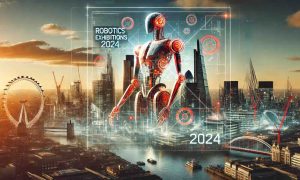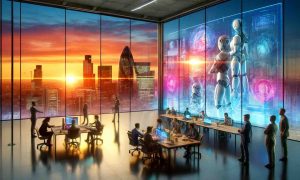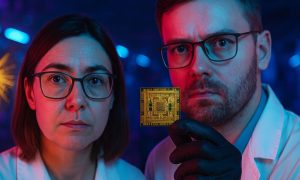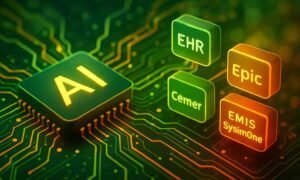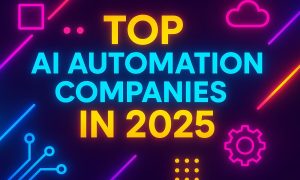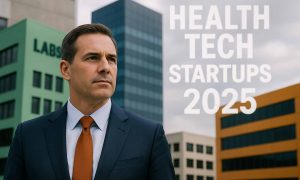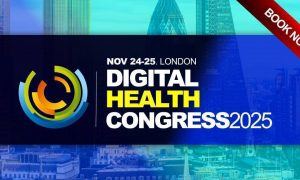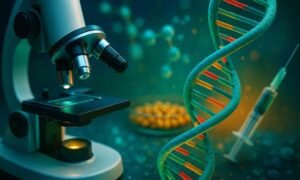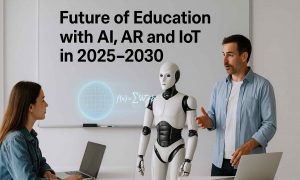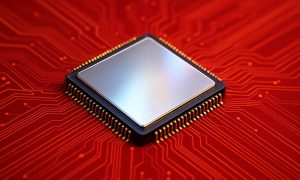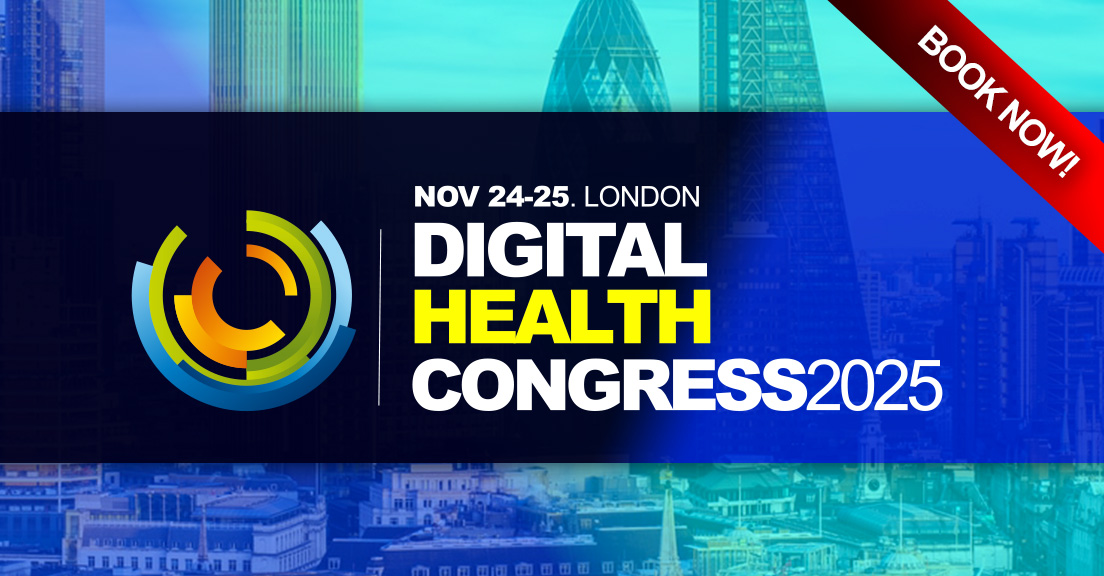
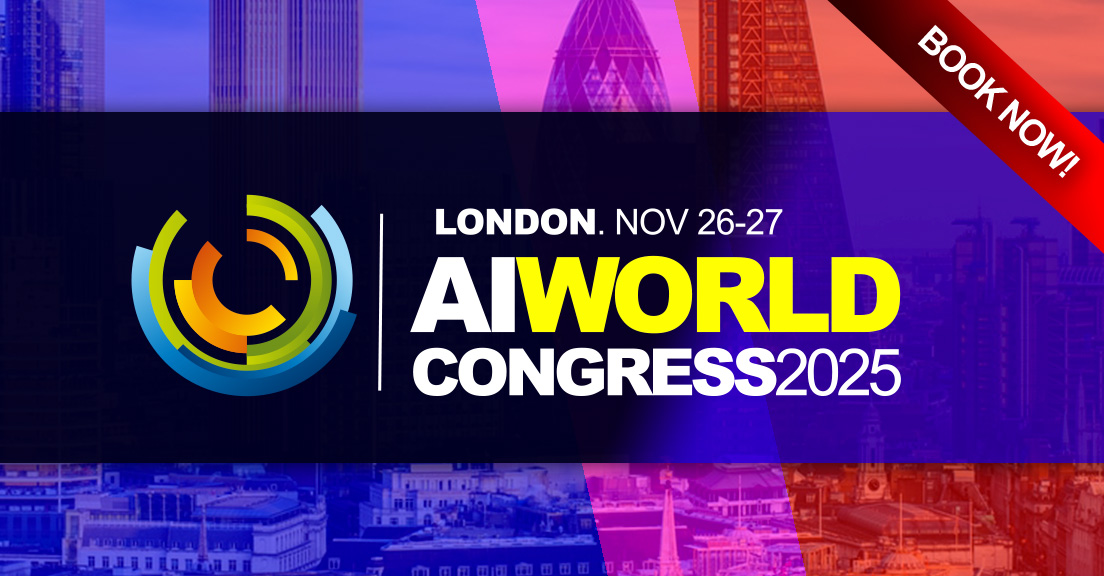
Introduction
Artificial intelligence (AI) and personal digital twins (PDT) are poised to revolutionize various aspects of our lives. These technologies, leveraging advanced data analytics and real-time simulations, promise significant enhancements in healthcare, work, education, finances, and beyond. This article explores these transformations, supported by examples and insights from recent developments in AI and PDT.
1. Healthcare Revolution
AI and PDT are set to transform healthcare by predicting and preventing diseases. By creating digital twins of patients, AI can simulate health outcomes and provide personalized treatment plans. For instance, tools like Foresight use generative AI to forecast medical conditions with high accuracy, offering potential for earlier diagnoses and tailored healthcare interventions (Harvard Business Review, 2022).
A study published in the Harvard Business Review highlights that AI-driven digital twins can significantly improve patient outcomes by enabling more precise and timely medical interventions. These tools can analyze vast amounts of data from electronic health records and wearable devices, predicting complications before they become critical (Harvard Business Review, 2022). Additionally, research from Columbia University has demonstrated the potential for AI to assist in personalized treatment planning, improving patient care outcomes (Columbia University, 2023).
2. Enhanced Clinical Decision-Making
AI-integrated digital twins can improve clinical decision-support systems, enabling healthcare providers to make more informed decisions. These tools analyze vast datasets to identify patterns and suggest optimal treatment pathways, thereby enhancing patient outcomes and operational efficiency.
The MIT Sloan Management Review discusses how AI and digital twins can simulate different treatment scenarios, allowing doctors to test various strategies before implementing them on patients. This approach reduces risks and improves the accuracy of clinical decisions (MIT Sloan Management Review, 2023). A study from Yale University supports this, showing how AI-enhanced decision-support systems can significantly reduce diagnostic errors (Yale University, 2023).
3. Personalized Medicine
Personalized medicine is becoming a reality with the help of AI. Digital twins can simulate individual responses to various treatments, allowing for customized healthcare strategies that improve effectiveness and reduce side effects.
An article from Harvard Business Review underscores the potential of AI in creating bespoke treatment plans. By integrating genetic, lifestyle, and environmental data, digital twins can predict how a patient will respond to specific medications, leading to more effective and personalized care (Harvard Business Review, 2022). Research published in the Journal of Medical Internet Research highlights similar findings, showing how digital twins can be used to tailor treatments to individual patients (JMIR, 2023).
4. Remote Monitoring and Telehealth
Digital twins enable continuous monitoring of patients through wearable devices, providing real-time data that healthcare providers can use to manage chronic conditions remotely. This approach enhances patient care and reduces the need for frequent hospital visits.
Research highlighted in the MIT Sloan Management Review reveals that AI-driven telehealth solutions, powered by digital twins, can significantly lower healthcare costs and improve patient satisfaction by facilitating proactive management of health conditions (MIT Sloan Management Review, 2023). Additionally, Forbes notes the increasing adoption of digital twins in remote patient monitoring to provide better healthcare access in rural and underserved areas (Forbes, 2023).
5. Workforce Transformation
AI is reshaping the workforce by automating routine tasks and augmenting human capabilities. In healthcare, for instance, AI can handle administrative duties, freeing up professionals to focus on patient care. This shift not only improves efficiency but also addresses workforce shortages.
The Harvard Business Review reports that AI automation in administrative tasks can save healthcare systems billions annually by reducing errors and streamlining operations, thereby allowing medical professionals to dedicate more time to patient-centric activities (Harvard Business Review, 2022). Furthermore, Forbes highlights how AI can optimize workforce management and productivity by predicting staffing needs and automating scheduling (Forbes, 2023).
6. Education and Skill Development
In education, AI and PDT can create personalized learning experiences. By modeling individual learning styles and progress, digital twins can tailor educational content to meet specific needs, fostering a more effective and engaging learning environment.
A detailed analysis in the MIT Sloan Management Review explains how digital twins in education can continuously adapt to a student’s learning pace and style, providing customized resources that enhance comprehension and retention (MIT Sloan Management Review, 2023). Additionally, Fast Company discusses how AI-driven platforms like Coursera are leveraging digital twin technology to offer adaptive learning paths for students (Fast Company, 2023).
7. Professional Training
Digital twins are also being used in professional training, simulating real-world scenarios for hands-on practice. This is particularly beneficial in fields like medicine and engineering, where practical experience is crucial for skill development.
Harvard Business Review discusses how digital twins in professional training programs can recreate complex environments, allowing trainees to practice without the risks associated with real-world errors. This method enhances learning outcomes and prepares professionals more effectively (Harvard Business Review, 2022). A study from Yale University shows that using digital twins in medical training significantly improves surgical skills and patient outcomes (Yale University, 2023).
8. Financial Management
AI and PDT are revolutionizing financial management by providing personalized financial advice based on simulated economic scenarios. Digital twins can model various financial decisions, helping individuals and businesses optimize their financial strategies and investments.
According to MIT Sloan Management Review, digital twins in finance can simulate market trends and individual investment behaviors, providing tailored advice that maximizes returns and minimizes risks. This technology enhances financial planning and decision-making processes (MIT Sloan Management Review, 2023). Additionally, Wired highlights how fintech companies are using AI and digital twins to offer customized investment strategies and risk assessments (Wired, 2023).
9. Risk Assessment and Mitigation
In the financial sector, digital twins can enhance risk assessment by simulating market conditions and potential financial crises. This enables more accurate predictions and better preparation for adverse events.
Harvard Business Review emphasizes that AI-driven risk models can predict market downturns and other financial disruptions with greater accuracy, allowing businesses to develop more resilient strategies and safeguard their assets (Harvard Business Review, 2022). Furthermore, Forbes reports that banks are increasingly adopting AI-based risk assessment tools to enhance their predictive capabilities (Forbes, 2023).
10. Future Work Environments
AI is transforming the workplace by enabling more flexible and remote working conditions. Digital twins of office environments can optimize workspace utilization, improve collaboration, and enhance productivity.
The MIT Sloan Management Review notes that AI and digital twins can model office layouts and workflows to maximize efficiency and employee satisfaction. These models can also simulate various remote work scenarios to identify the best practices for maintaining productivity and work-life balance (MIT Sloan Management Review, 2023). Fast Company discusses how companies are using AI to create virtual offices that facilitate seamless remote collaboration (Fast Company, 2023).
11. Smart Cities
The integration of AI and digital twins in urban planning is creating smarter cities. These technologies can simulate urban dynamics, optimize traffic flow, manage public utilities, and improve overall quality of life for residents.
A Harvard Business Review article describes how cities like Singapore are using digital twins to enhance urban planning and infrastructure management, leading to more sustainable and livable urban environments (Harvard Business Review, 2022). Wired also reports on how cities are leveraging AI to manage resources efficiently and respond dynamically to changing urban conditions (Wired, 2023).
12. Environmental Sustainability
Digital twins can contribute to environmental sustainability by modeling the impact of various policies and initiatives. For example, they can simulate the effects of renewable energy projects or waste management strategies, guiding more sustainable decision-making.
MIT Sloan Management Review highlights how digital twins can predict the environmental impact of industrial activities and suggest modifications to reduce carbon footprints and promote sustainability (MIT Sloan Management Review, 2023). Additionally, Fast Company discusses how companies are using AI to track and reduce their environmental impact in real-time (Fast Company, 2023).
13. Ethical and Governance Challenges
While the benefits of AI and PDT are immense, they also pose ethical and governance challenges. Issues such as data privacy, algorithmic bias, and the need for robust regulatory frameworks must be addressed to ensure these technologies are used responsibly.
Harvard Business Review discusses the importance of establishing ethical guidelines and governance structures to oversee the development and deployment of AI and digital twins. This includes ensuring transparency, accountability, and fairness in AI applications (Harvard Business Review, 2022). Forbes also emphasizes the need for ethical AI practices to prevent misuse and ensure fair outcomes (Forbes, 2023).
14. Conclusion
The integration of AI and personal digital twins is set to transform multiple facets of our lives, from healthcare and education to finance and urban living. By harnessing these technologies, we can unlock unprecedented opportunities for personalization


